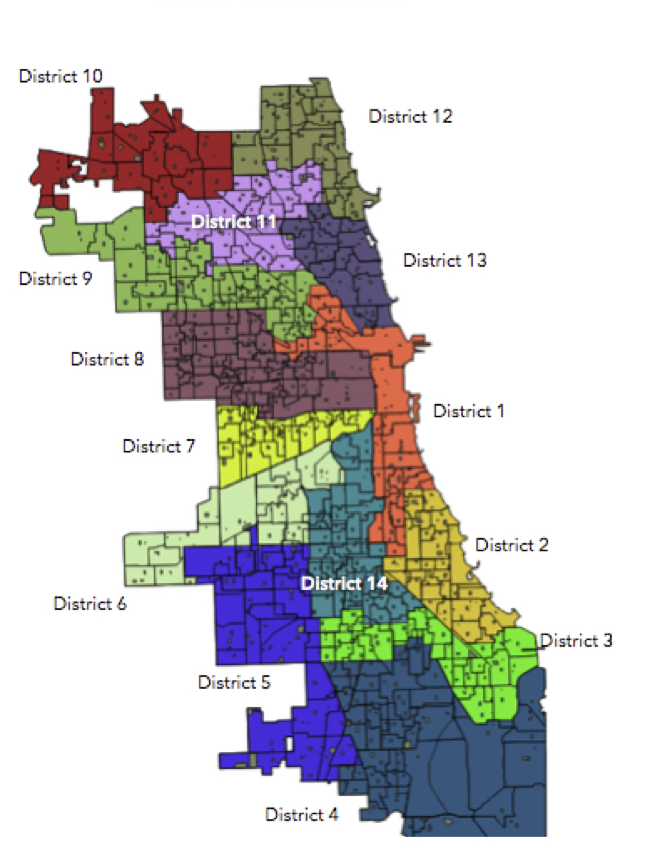(Copied from original draft first posted in October, 2013)
THE MAP ON THE PREVIOUS PAGE outlines each and every elementary school attendance area and the high school attendance areas that circumscribe them. Each of these schools’ attendance areas are built along federal census tracts and are mapped based on population density. In other words, they are proportionally defined. Incidentally, each of these schools does act as an elected district, as they all are governed by Local School Councils.
LSCs are made up of the constituents of the school. Teachers, staff, community members, and parents all have theopportunity to serve interests. They are the building block for democracy in public education. As such, the building blocks can be combined to create larger structures.
In the map on the previous page, the thin black lines represent the attendance boundaries of public schools. Using the High Schools are the terminus boundaries, the lines can be used to create districts that can form a representative school board.
Instead of running directly for the fourteen seats of Chicago’s school board in what would be hotly contested and expensive races, the parents, teachers, and other members of the schools’ constituencies can exercise their same right of agency by running for their LSC. However, with a representative school board structure, these same local school council representatives would then be able to self-elect a delegate to the District Caucus. If each elementary school and each high school sends one delegate to a District Caucus, and if there are 14 geographic districts, as the map depicts, than roughly 42 delegates would be sent to each caucus.
These caucuses could serve two purposes. First, they are geographically based on school attendance areas, so, as dually elected representatives of their schools, the members could coordinate toward shared area goals. Secondly, the delegates there can self-elect a representative to serve on the Representative School Board.
As the graphic above displays, the local schools serve as the most local unit of this structure. Together, they send delegates to form district caucuses, which in turn, each elect a representative to the school board.
This not only preserves individual and community agency in its structure, but it mitigates the ability to “buy out” the election. The path to the CPS board should be a local one and should require consensus building to build a better CPS. This model for an elected school board accomplished both. ****
https://danielkleinman.org/lsc/

